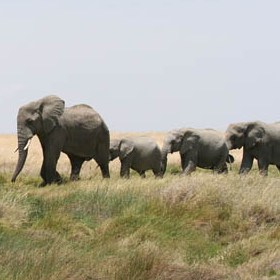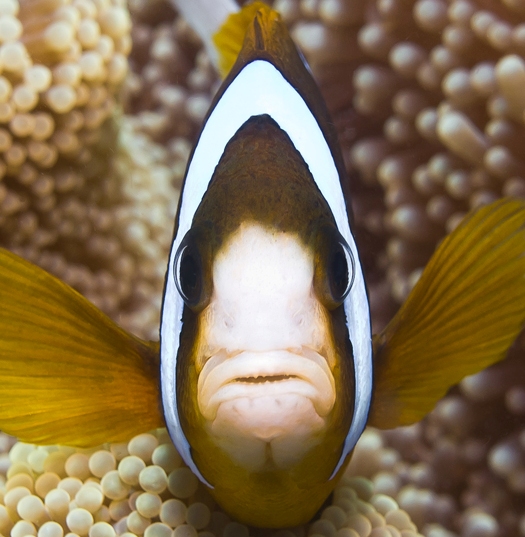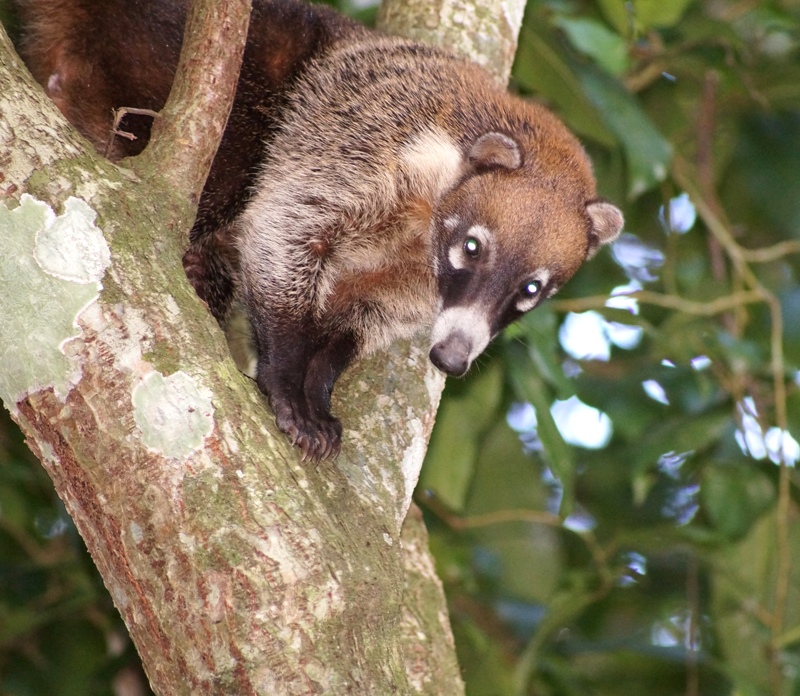Clear win for species in World Heritage sites
If I tell you World Heritage, what do you see? The Great Wall of China, the Pyramids of Egypt, Vatican City? World Heritage is often associated with cultural heritage. However, the prestigious World Heritage List contains 193 natural sites, and 29 mixed cultural and natural sites. Wait – did you just think of the Galapagos and Ha Long Bay?
World Heritage has a key role in conserving some of the most irreplaceable and valuable natural habitats where many of the emblematic species inhabiting our planet can thrive.
Out of the 222 sites inscribed on the World Heritage List for their natural importance, 133 – or 60% – have Outstanding Universal Value based on their significance for species conservation, including threatened species.
Natural World Heritage sites also account for half of the land covered by the protected areas identified as most critical to preventing extinctions of mammals, birds and amphibians, according to a recent study published in Science journal, which based its findings on the World Database on Protected Areas and The IUCN Red List of Threatened Species.
The study was part of an analysis of terrestrial gaps in the global World Heritage map. It calculates the ‘irreplaceability’ of individual protected areas to quantify their contribution to the long-term survival of species.
The author of the study made the point that, if all 78 sites found to be “exceptionally irreplaceable” for species conservation were given World Heritage status, their protection would be boosted given the rigorous standards required for World Heritage sites.
The natural sites that are protected under the World Heritage Convention are places that the international community has recognized as significant for all humanity. We – NGOs, governments, the public sphere, you, me – have collectively endorsed shared responsibility to protect World Heritage sites, so that future generations can benefit from them too.
Should we expect the best out of World Heritage sites? Absolutely. Does the best come out of World Heritage sites? Yes and no. Can we do better? Of course, and IUCN World Heritage Programme, the advisory body on nature to the World Heritage Committee, is about to launch a new knowledge product to make it happen.
Expect the best
World Heritage sites offer insight into the way protected areas around the planet are conserved and managed. Experiences, successes and challenges encountered in real-world practice of the World Heritage Convention are illustrations of the realities faced across protected areas.
They are the litmus test for measuring success: if we do not manage to deliver in this segment of globally recognized protected areas, we clearly have failed.
At the same time, these sites have the potential to be the learning laboratories and a source of inspiration for protected areas practitioners. Exposing successful performance opens up the possibility for the transfer of good management practices among sites, and for sharing lessons in the wider protected area community.
Thus there is a clear pathway for World Heritage properties to play a leading role in meeting and resolving the challenges faced by protected areas worldwide.
Today, however, the most reliable way we learn about what goes on in World Heritage sites is through reactive monitoring, which is carried out only in response to problems that have been identified. As a consequence, out of the current 222 natural World Heritage sites, we know that 8% are listed as “in danger” and 25% are affected by serious conservation issues.
The state of conservation of the remaining sites is little known.
Eye on threats
Reactive monitoring is extremely important to keep major threats under the radar and mobilize attention at the international level on the sites that are most affected.
The Selous Game Reserve in Tanzania, for example, is famous for its large elephant population, which is explicitly stated as one of the reasons why the World Heritage Committee inscribed Selous on the World Heritage List in 1982.
At the time, the Selous elephant population was estimated at around 106,300. It suffered a steep decline to just over 22,000 in 1991, but due to effective anti-poaching efforts since 1992 the population recovered to more than 70,400 in 2006.
However, a population survey carried out in 2013 by Tanzania Wildlife Research Institute in collaboration with Frankfurt Zoological Society and others, estimates the current elephant population in the Selous-Mikumi ecosystem at a mere 13,084 – the lowest ever recorded since 1976.
Eye on results
What reactive monitoring seldom brings out is the success achieved on the ground as a result of best practice and effective management. Species do thrive in World Heritage sites. And the contribution of zoological conservation projects in these exceptional areas is part of that achievement.
A recent study prepared jointly by Berkley University’s Museum of Vertebrate Zoology and two universities of Illinois catalogued 155 amphibians – such as frogs, toads, salamanders and caecilians – and 132 reptiles – such as snakes, lizards, turtles, and caimans – in Manú National Park in Peru, where Frankfurt Zoological Society is also conducting a project.
This site, which was inscribed on the World Heritage List in 1987, represents only 0.01% of the planet’s land surface; yet 2.2% of all amphibians and 1.5% of all reptiles known worldwide inhabit it. This makes it the top protected area in the world for amphibian and reptile diversity.
There has been a clear win for animal species in World Heritage sites. Their stories need to be told so we can gain 360-degree vision on the effect of the World Heritage Convention on the ground – and clearly demonstrate that high standards and best practice bring real results.
360-degree vision
IUCN World Heritage Programme, together with the World Commission on Protected Areas, is developing strategies and actions to help boost World Heritage performance over the next decade.
A key product that will be launched in Spring 2014 is the new IUCN World Heritage Outlook website, followed by a report planned for the IUCN World Parks Congress taking place in November 2014, in Sydney, Australia. It sets out to improve the conservation future of the Earth’s iconic places by tracking the state of conservation for all natural and mixed World Heritage sites.
It will show evidence of best practice and identify the standards that sites need to achieve to remain excellent.
This approach allows us to harness the widely untapped potential of the World Heritage Convention as one of the world’s most important, and most underrated, conservation instruments. Through it, we can raise awareness of World Heritage sites as flagships for innovations in management, responding to major threats and pioneering best practice.
Author: Célia Zwahlen
This article was published in the March 2014 edition of WAZA News.







